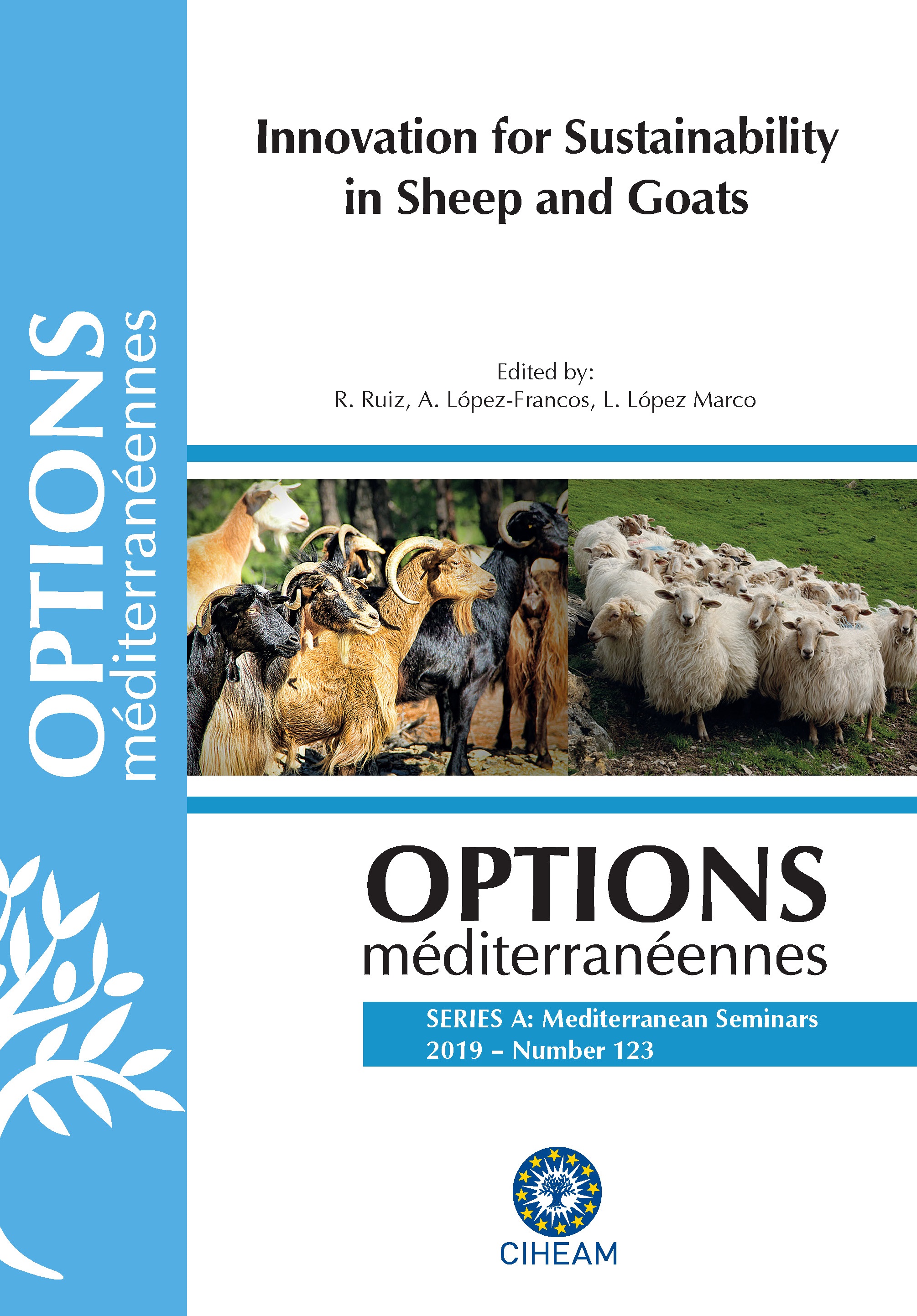| Article précédent | p. 173-176 | Article suivant |
Dietary pomegranate pulp to improve meat fatty acid composition in lambs
The aim of this study was to evaluate the effect of dietary pomegranate pulp (PP) on the intramuscular fatty acid (FA) composition in lambs. Seventeen Comisana lambs were individually stalled, divided into two groups and fed for 44 days: a barley-corn based concentrate diet (CON-8 lambs) or a concentrate diet containing 20% of PP to partially replace barley and corn (POM-9 lambs). The inclusion of PP in the diet produced an overall improvement of the fatty acid composition of LTL. In particular, percentages of C18:1 t11 (0.73 vs 1.38, P < 0.001), C18:2 c9t11 (0.35 vs 0.94, P < 0.001), C18:3 c9c12c15 (0.37 vs 0.51, P < 0.001) and C18:2 c9c12 (5.37 vs 7.09, P = 0.035) were higher in the meat of POM group in comparison with CON lambs. All the mentioned FAs are involved in the ruminal metabolism of lipids, suggesting an effect of the bioactive compounds contained in PP on the FA biohydrogenation. In addition, C18:3 c9t11c13 (punicic acid), the peculiar FA of pomegranate seeds, was detected only in the muscle of POM lambs, representing 0.48% of the total fatty acids. The percentage of PUFA was significantly higher in meat from POM group compared to CON. In conclusion, a diet containing 20% of PP increased the proportion of healthy fatty acids in meat without compromising animal growth.
Le but de cette étude est d’évaluer l’effet sur la composition en acide gras intramusculaire des agneaux exposés à une alimentation basée sur l’utilisation de pulpe de grenade. Dix-sept agneaux d’espèce Comisana ont été séparés dans des box, classés en deux groupes et nourris pour 44 jours : un régime concentré à base d’orge et de maïs (8 agneaux) ou un régime concentré composé à 20% de pulpe de grenade qui remplace, en partie, l’orge et le maïs (9 agneaux). L’inclusion dans le régime de pulpe de grenade a produit, en général, une amélioration de la composition en acide gras du muscle LTL. En particulier, les pourcentages de C18 :1 t11 (0,73 vs 1,38, P < 0,001), C18 :2 c9t11 (0,35 vs 0,94, P < 0,001), C18 :3 c9c12c15 (0,37 vs 0,51, P < 0,001) et C18 :2 c9c12 (5,37 vs 7,09, P = 0,035) ont été plus élevés dans les viandes du groupe alimenté avec la pulpe de grenade (POM) en comparaison avec les agneaux du groupe alimenté avec l’orge et le maïs (CON). Tous les acides gras mentionnés sont impliqués dans le métabolisme des lipides des ruminants ce qui suggère un effet des composants bioactifs contenus dans la pulpe de grenade et dans la bio-hydrogénation des acides gras. En outre, C18 :3 c9t11c13 (acide punicique), acide gras spécifique de la pulpe de grenade ; a été détecté seulement dans le muscle des agneaux POM, représentant’ 0,48% du total des acides gras. Les pourcentages de AGPI et AGMI ont considérablement augmenté dans la viande du groupe (POM) par rapport à celle du groupe (CON). En conclusion, un régime contenant 20% de pulpe de grenade a permis d’augmenter la proportion de bons acides gras dans la viande, sans compromettre la croissance des animaux.
- [ Afficher ]
- [ Télécharger ]
- [ Exporter la citation ]
Vous pouvez télécharger la citation au format :
- [ Imprimer ]
-
Mots-clés
ACIDE GRAS, AGNEAU, GRENADE FRUITSCiter cet article
Natalello A., Luciano G., Morbidini L., Priolo A., Biondi L., Pauselli M., Lanza M., Valenti B. Dietary pomegranate pulp to improve meat fatty acid composition in lambs. In : Ruiz R. (ed.), López-Francos A. (ed.), López Marco L. (ed.). Innovation for sustainability in sheep and goats. Zaragoza : CIHEAM, 2019. p. 173-176. (Options Méditerranéennes : Série A. Séminaires Méditerranéens; n. 123). 2. Joint Seminar of the Subnetworks on Nutrition and on Production Systems of the FAO-CIHEAM Network for Research and Development in Sheep and Goats, 2017/10/03-05, Vitoria-Gasteiz (Spain). http://om.ciheam.org/om/pdf/a123/00007880.pdf



